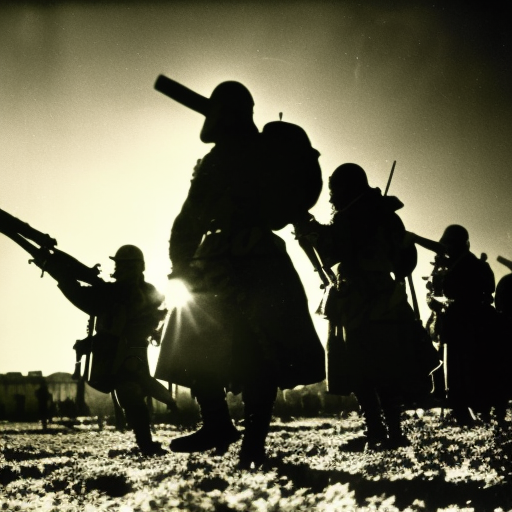Battle of Rocroi: Turning Point in the Thirty Years’ War
The Battle of Rocroi, which took place on May 19, 1643, was a significant turning point in the Thirty Years’ War. It marked the decline of Spanish military dominance and the rise of French military power. The battle was fought between the Spanish Army, led by Don Francisco de Melo, and the French Army, commanded by Louis II de Bourbon, Prince of Condé.
Background: The Thirty Years’ War was a complex conflict that involved multiple European powers and religious factions. Spain, a Catholic nation, had been the dominant force in Europe for decades. However, by the early 17th century, the Spanish Empire was facing numerous challenges, including financial strain and internal rebellions. France, on the other hand, sought to expand its influence and challenge Spanish supremacy.
Spanish Army: The Spanish Army at Rocroi was composed of seasoned veterans, known as tercios, who were renowned for their discipline and effectiveness. However, the army was hampered by outdated tactics and a lack of resources. Don Francisco de Melo, the Spanish commander, was an experienced general but was facing a French force that outnumbered his troops.
French Army: The French Army, led by Prince of Condé, was a formidable force that had undergone significant reforms under the guidance of Cardinal Richelieu. The French troops were well-trained, well-equipped, and highly motivated. They were also supported by a well-organized supply system, which gave them a significant advantage over the Spanish.
The Battle:
The Battle of Rocroi began with a Spanish artillery barrage, followed by a cavalry charge. The Spanish cavalry initially gained ground, but the French infantry, supported by their artillery, managed to hold their position. The French cavalry then launched a counterattack, which pushed back the Spanish forces.
The turning point of the battle came when the French infantry, using their newly developed linear tactics, managed to break through the Spanish tercios. This was a significant departure from the traditional Spanish formation, which relied on tightly packed squares. The French breakthrough caused panic and confusion among the Spanish troops, leading to a collapse of their defensive line.
The French cavalry, taking advantage of the disarray in the Spanish ranks, launched a series of devastating charges that further demoralized the Spanish forces. The battle ended with a decisive French victory, as the Spanish army was forced to retreat.
Impact:
The Battle of Rocroi had far-reaching consequences for both Spain and France. For Spain, it marked the beginning of the end of its military dominance in Europe. The defeat shattered the myth of Spanish invincibility and exposed the weaknesses of the Spanish Army. It also weakened Spain’s position in the ongoing negotiations to end the Thirty Years’ War.
For France, the victory at Rocroi was a significant boost to its prestige and military reputation. It demonstrated the effectiveness of the French reforms and established France as a major European power. The battle also paved the way for further French military successes in the later stages of the war.
The Battle of Rocroi is often seen as a turning point in European military history. It highlighted the importance of well-trained and well-equipped infantry, as well as the need for flexible tactics. The battle also foreshadowed the decline of the Spanish Empire and the rise of France as the dominant power in Europe.
In conclusion, the Battle of Rocroi was a decisive engagement that marked the decline of Spanish military dominance and the rise of French military power. The French victory shattered the myth of Spanish invincibility and established France as a major European power. The battle also had a significant impact on European military tactics and strategy.












